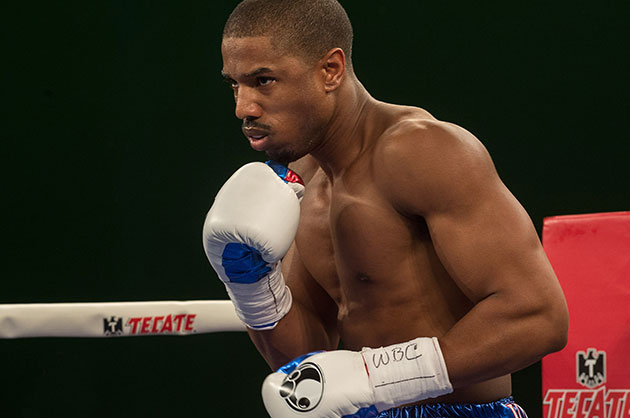
1) #oscarssowhite
Last year at this time, The Atlantic ran a headline complaining, "The Oscars haven't been this white in 19 years," noting that 2015 was the first time in since 1996 that all 20 acting nominees were white. Well, the Academy made it a double feature, going a second straight year without nominating people of color in the acting categories and giving a second wind to Twitter's #oscarssowhite tag. Making matters worse, while two films about mostly black characters — Creed and Straight Outta Compton — got nominations, those nods went to only white people associated with them (Creed supporting player Sylvester Stallone and Straight Outta Compton's screenwriters), not the black actors who starred in them or the black directors who made them. Though AMPAS is known as a fairly homogenous group — in 2012, the Los Angeles Times reported that Oscar voters are 94 percent caucasian — it's not entirely fair to blame the Academy for this. If Hollywood were a more welcoming environment for people of color in the first place, there would be more opportunities for the Oscars to recognize their work. Either way, even the Academy knows it's in a bad spot when it comes to diversity. Said AMPAS President Cheryl Boone Isaacs when asked about the issue by Deadline, "We have got to speed it up."

2) Year of the Women
Diversity advocates might take some solace in the fact that women took a dominant role in this year's Oscar race. Competition in the lead actress category is so fierce that Rooney Mara, who clearly gives one of two lead performances in Carol (and was recognized as a lead by the Golden Globes), was busted down to supporting in campaigning by The Weinstein Company, which was desperate not to split the Carol vote between her and Cate Blanchett. What's more, many of the nominated films are stories specifically about complicated and realistic female characters, which can be in short supply at Oscar time — Carol, Room, Joy, 45 Years, Brooklyn. Make no mistake, Carol partisans feel that the lesbian-themed film was robbed of nods for Best Picture and Best Director. (As eminent blogger Nathaniel R points out, it's highly unusual for a film to earn six nominations and still be shut out of Best Picture.) Still, representation across both genders is pretty strong this year, and that's refreshing to see.

3) The Year of George Miller and Mad Max
It didn't win any acting nominations, but Mad Max: Fury Road is another woman-oriented story (some called it feminist; others argued it was simply humanist). Along with Star Wars: The Force Awakens, it bucked Hollywood's longstanding trend of male-dominated action movies. Action movies and sequels rarely generate much Oscar interest (The Return of the King is a big exception in recent history), but director George Miller's apocalyptic epic was so awesome in so many ways that it galvanized the Academy across multiple categories, from directing and cinematography to costume design and VFX. It's also one of the best reviewed movies of the year, per Rotten Tomatoes. Miller's take? "Who would have thunk it, eh?"

4) The Cinematography Spread
Remember when it was a novelty to see a digitally shot feature film (Slumdog Millionaire) win the cinematography Oscar? 2009 sure seems like a long time ago, now that the industry has shifted to predominantly digital capture. But this year saw film roaring back as part of a grab bag of acquisition formats. Ed Lachman shot Carol on Super 8. Robert Richardson shot The Hateful Eight on 65mm anamorphic. Emmanuel Lubezki shot The Revenant with the large-format Alexa 65. Just about the only format not well-represented among the nominees was 35mm — who would have thought the once-standard format would take a backseat to 16mm and 65mm in a shot-on-film revival?

5) Ex Machina: The Little Movie That Could
How on earth did Ex Machina, a $15 million indie film, end up in the final five nominees for the VFX Oscar? Well, you have to look first to the quality of work itself, and Ex Machina's fembot, performed by Alica Vikander with a significant CG assist, is certainly a convincing character. You have to look also at the significance of the VFX work in context of story and character, and it's clear that Ex Machina's VFX work contributed to a queasily surreal atmosphere that underscored its themes of (SPOILERS!?) artifical intelligence, fetishism and sexism, and finally liberation. VFX is most often employed as a vehicle for escapism, which is great. Ex Machina proved that it can also be used in seriously philosophical, morally fraught ways. It's unlikely to win — not in a field where it competes with a Star Wars movie — but you know what they say: it's an honor just to be nominated.
Topics: Blog Oscars oscars 2016
Did you enjoy this article? Sign up to receive the StudioDaily Fix eletter containing the latest stories, including news, videos, interviews, reviews and more.
